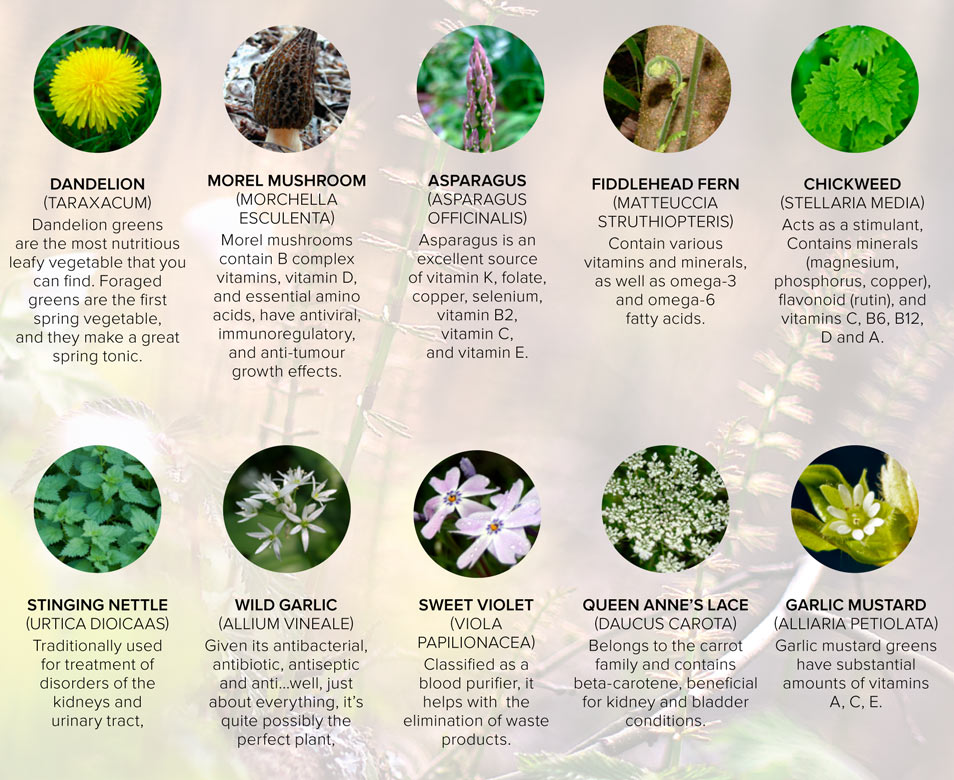A-Foraging We Will Go
A Guide to Uncovering Spring’s Best Provisions
In Vermont, we live by the seasons. And as Vermonters, many of us live close to the land. We grow vegetables in our kitchen gardens. We pick berries and apples, we gather nuts. We hunt waterfowl, grouse, woodcock and deer to fill our freezers for the winter. We collect sap and boil it down to make the best maple syrup found anywhere. When it comes to the renaissance of foraging for food in both wild and urban spaces, we have to wonder what the fanfare is all about. We have always looked to the land for free healthful food. As a largely rural state with more miles of dirt roads than paved roads, we have always known to find food outside of our local markets or groceries.
While the spring weather may be unpredictable, the cycle of nature’s bounty is not. When the syrup makers are cleaning their equipment and re-stocking their wood piles, we scour the woodlands and fields for fresh delicacies. We delight in the first purplish roots of wild leeks (we call ’em ramps hereabouts) pushing through the brown leaves under the last vestiges of snow. Once the jars of wild ramp marmalade and relish are on the shelf, the unfurled fiddlehead ferns are just ready to harvest, and we head back to the woods. After the fiddleheads, the stinging nettles are ripe for picking along the edges of sunny fields. And then the deliciously bitter dandelion greens.
And so it goes through the season, from morel mushrooms to tiny tender violets, it’s our collective hunt. Foraging gives purpose to our walks in the woods. We guard secret spots fiercely and we are mindful of nature’s abundance. We know to take only what we need and leave enough to carry on for the next year’s harvest. We take pride in stocking our shelves with native foodstuffs, with the same edibles enjoyed by our ancestors for hundreds of years—before this resurgence of looking to the land for found food was revived.
Anyone can learn to gather “wild” foods. Many local identification classes and field demonstrations exist (until you are thoroughly familiar with what is safe, wild plants should always be checked with an expert before eating); you just have to do a little investigating. And the payoff is so rewarding when you discover the variety of tastes and textures you can add to your daily menus.
Originally published in The Orvis News Spring 2016
All photos ® The Orvis Company







